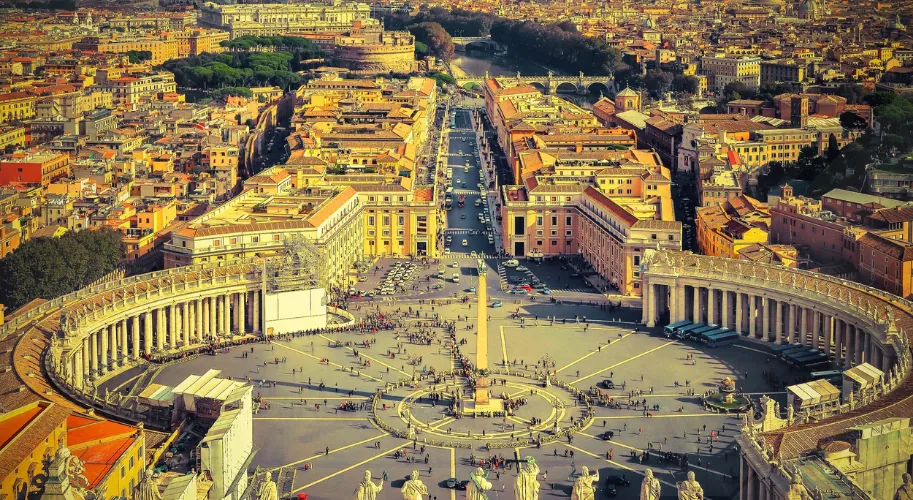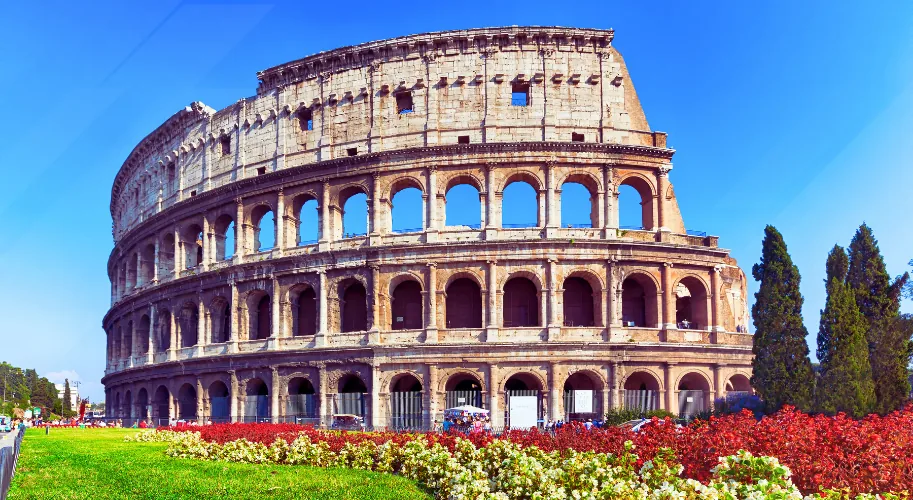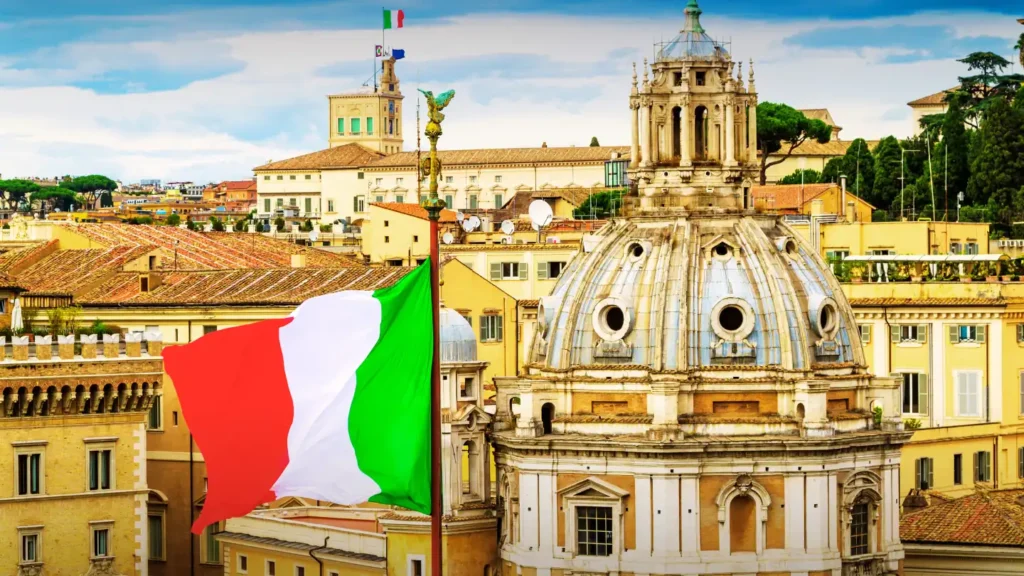Italy is a country that captures the heart of every traveler who sets foot on its soil. From the ancient ruins of Rome to the charming, sun-drenched beaches of the Amalfi Coast, there’s a piece of Italy waiting for everyone. Crafting the perfect Italy travel itinerary is more than just ticking off famous landmarks; it’s about immersing yourself in the vibrant culture, savoring mouth-watering cuisine, and discovering hidden gems.
Let’s dive into how you can create an unforgettable journey through one of the world’s most enchanting destinations.
Table of Contents
Italy Map
Popular Beach in Italy
Explore 5 Best Beaches in Sardinia
Popular & Historical Place in Italy
Best Area to Stay in Florence || Museo Ebraico Di Torino
Popular Hotel & Resorts in Italy
Discovering Il Banco Langhe || Ciesa Padón
More Read in Italy
Explore Best Places to Visit in Sardinia || A Traveler’s Guide to Sardinia Airports || Sardinia Travel Guide
1. Beaches in Italy: Sun, Sand, and Sea
Italy isn’t just about ancient ruins and art. It has some of the most beautiful beaches in Europe. Italy’s coastlines are the place to be if you love relaxing by the sea, swimming in crystal-clear waters, or enjoying water sports.
- Amalfi Coast: Known for its cliffs and colorful villages, the Amalfi Coast offers stunning beach spots. Positano and Ravello are popular destinations for those looking for both scenic beauty and beaches.
- Sardinia: If you’re after the perfect beach, Sardinia is a paradise. Its white sand beaches and clear blue waters are ideal for sunbathing or swimming. Beaches like La Pelosa and Costa Smeralda are a must-visit.
- Cinque Terre: While the five villages are more famous for hiking, they also have small but charming beaches where you can relax and enjoy the views.
- Tips: For a more relaxed, less touristy beach experience, head to the islands or some more remote coastal areas.
2. Cities in Italy: A Blend of Old and New

Italy is home to some of the world’s most famous cities. Each has a rich history, beautiful architecture, and a modern vibe that combines the old and the new.
- Rome: The capital city is a must-see for history lovers. From the Colosseum to the Pantheon, it’s a city where ancient ruins meet vibrant modern life. Don’t forget to visit the Vatican too!
- Florence: Known as the birthplace of the Renaissance, Florence is a treasure trove of art and history. From the Uffizi Gallery to Michelangelo’s David, art lovers will find a dream destination here.
- Venice: With its canals, gondolas, and beautiful palaces, Venice is unlike any other city. St. Mark’s Square, the Rialto Bridge, and Doge’s Palace are just a few highlights.
- Milan: Milan is Italy’s chic capital for those who love shopping and fashion. It has incredible landmarks like the Duomo and Leonardo da Vinci’s “The Last Supper.”
- Tips: Explore on foot. Walking through the narrow streets gives you the best experience and lets you discover hidden gems.
Ads


3. Nature in Italy: Breathtaking Landscapes
Italy’s natural beauty is as diverse as its cities. From snow-capped mountains to lush green hills, there are plenty of places to immerse yourself in nature.
- Dolomites: A mountain range in northern Italy, the Dolomites offer spectacular hiking trails, skiing in the winter, and beautiful views year-round. It’s perfect for outdoor enthusiasts.
- Tuscany: The rolling hills of Tuscany are a sight to behold, especially in the spring and summer when the vineyards are in full bloom. You can bike through the countryside or drive leisurely to enjoy the views.
- Lake Como: For a peaceful retreat, head to Lake Como. Surrounded by mountains, the lake offers activities like boat tours, hiking, and swimming, all with fantastic scenery.
- Tips: If you’re into hiking, explore the national parks, especially those in the north. The views are simply unforgettable.
4. Historical Places in Italy: A Walk Through Time

Italy’s history is rich and fascinating, and visiting historical sites is one of the best ways to learn about the country’s past. From ancient ruins to medieval castles, Italy is full of places where history comes to life.
- Pompeii and Herculaneum: These ancient Roman cities were destroyed by the eruption of Mount Vesuvius in 79 AD. Today, they are open-air museums, offering a unique glimpse into daily life during Roman times.
- The Colosseum in Rome: This iconic amphitheater is a must-see for anyone interested in ancient history. It once hosted gladiator battles and is one of the most recognizable symbols of Rome.
- The Leaning Tower of Pisa: No visit to Italy is complete without a stop in Pisa. The Leaning Tower is part of a beautiful cathedral complex, and while it’s touristy, it’s a must-see for anyone traveling through Tuscany.
- Castel del Monte: Located in the south, this mysterious medieval castle is known for its unique octagonal shape and is a UNESCO World Heritage site.
- Tips: Many historical sites in Italy can get crowded, especially in summer, so try visiting early in the morning or later in the afternoon.
5. Italian Food: A Delicious Part of Your Itinerary

Italy is known for its world-class cuisine; every region has its specialties. Exploring the local food scene is a big part of the Italian experience.
- Pizza in Naples: Naples is the birthplace of pizza, so you must try an authentic Margherita pizza here. The crust is soft, the tomatoes are fresh, and the mozzarella is perfect.
- Pasta in Bologna: Bologna is known for its rich food culture, and the pasta here is unlike any other. Try a plate of tagliatelle with ragu, which the locals call “Bolognese.”
- Gelato Everywhere: Don’t leave Italy without tasting gelato. It’s the perfect treat, especially in the summer, and you’ll find gelato shops nationwide.
- Tips: Enjoy your meals slowly. Italians take time to savor their food, so don’t rush through them.
6. Countryside in Italy: Tranquil Escapes
Italy’s countryside offers peaceful retreats if you want a break from the busy cities. You can spend time in charming villages, visit vineyards, or enjoy the quiet beauty of rural Italy.
- Chianti Region: In Tuscany, the Chianti region is known for its vineyards and wineries. A visit here includes wine tours, tastings, and beautiful countryside views.
- Umbria: Often called “Tuscany’s quieter neighbor,” Umbria is perfect for those seeking small medieval towns, stunning landscapes, and delicious food.
- The Italian Alps: If you enjoy winter sports or want fresh mountain air, the Alps offer skiing, hiking, and breathtaking views.
- Tips: Renting a car is the best way to explore the countryside, as public transportation may not reach all the beautiful, hidden villages.
7. Festivals and Events in Italy: Celebrate Italian Culture
Italy has a lively cultural calendar, with festivals happening throughout the year. These events offer you a chance to experience Italian traditions, food, and music in a fun and unique way.
- Carnival of Venice: Held every year before Lent, this famous carnival is known for its elaborate masks and costumes. It’s a celebration of Venetian culture and one of the most unique events in Italy.
- Palio di Siena: A historic horse race held twice a year in Siena. The Palio is a colorful, high-energy event that draws huge crowds.
- Opera in Verona: During the summer, Verona’s ancient amphitheater hosts some of the world’s best opera performances.
- Tips: Check the local event calendar before your trip, as some festivals require an advance ticket or accommodations booking.
8. Transportation in Italy: Getting Around with Ease
Italy has a well-developed transportation system that makes traveling through the country relatively easy. Here’s everything you need to know.
- Trains: Italy’s train system is fast, efficient, and affordable, making it one of the best ways to travel between cities and regions. The high-speed trains (Frecciarossa and Italo) can take you between Rome, Milan, Florence, and Naples in just a few hours. Local trains also connect smaller towns and villages.
- Public Transport: In major cities like Rome, Milan, Florence, and Venice, public transport (buses, trams, metro) is widely available. A simple day pass or multi-day pass can save you money if you plan to travel a lot within the city.
- Car Rental: Renting a car is a great way to explore rural areas, small villages, or the countryside. Tuscany, for example, is best explored by car if you want to visit its vineyards or quiet towns. However, driving in cities can be challenging due to traffic and limited parking.
- Taxis and Ride-Sharing: Taxis are available in every city, and ride-sharing apps like Uber are available in select locations. However, they may not be as common as in some other countries.
- Ferries: If you’re heading to islands like Sardinia, Sicily, or Capri, ferries are a popular option. Ferries also connect some coastal towns and regions, such as the Amalfi Coast.
- Tips: Book tickets in advance to secure the best prices if you travel by train. And remember, Italy’s major cities can get very crowded, so using public transport is often more convenient than finding parking.
9. Practical Information for Travelers
Before you head to Italy, you must know some basic travel information to make your trip smoother.
- Currency: Italy uses the Euro (€). ATMs are widely available, and credit cards are accepted in most places. Carrying some cash is always a good idea, especially in smaller towns.
- Language: The official language is Italian. English is spoken in major tourist areas, but learning basic Italian phrases can go a long way in smaller towns and when interacting with locals.
- Safety: Italy is generally safe for travelers, but like any tourist destination, pickpocketing can be an issue in busy areas, especially in cities like Rome and Florence. Be mindful of your belongings, particularly in crowded places.
- Tipping: Tipping is appreciated but not mandatory. In restaurants, a service charge is often included in the bill, but leaving a small tip for good service is always lovely.
- Best Time to Visit: The best times to visit Italy are spring (April to June) and fall (September to October). The weather is pleasant, and the crowds are smaller. Summer (July and August) can be very hot, especially in the south, and many Italians take their vacation during this time, so that some businesses might close.
Conclusion: Your Ideal Italy Travel Itinerary Awaits

An Italian travel itinerary isn’t just a list of destinations—it’s an invitation to explore a country brimming with history, art, natural beauty, and exceptional food. From the bustling streets of Rome to the peaceful landscapes of Tuscany, each moment in Italy has the potential to become a cherished memory.
No matter where your travels take you, Italy’s charm will capture your spirit and leave you wanting more. With the right mix of planning and spontaneity, your time in Italy will be magical. So, pack your bags and prepare for a lifetime journey. Italy is waiting.
Happy travels!
FAQs
Q: What is the best Italy travel itinerary for first-time visitors?
A: The ideal Italy travel itinerary for first-time visitors includes Rome, Florence, Venice, and the Amalfi Coast, which offer a mix of history, art, and beaches.
Q: How long should I spend on an Italy travel itinerary?
A: A 10-14 day Italy travel itinerary is perfect for exploring the major cities and regions. A 7-day trip can still cover the highlights.
Q: Can I travel across Italy by train?
A: Yes, Italy’s high-speed trains make it easy to travel between major cities on your Italy travel itinerary, offering comfort and speed.
Q: What is the best time to follow an Italy travel itinerary?
A: The best time to visit Italy is during spring (April-June) and fall (September-October), when there is pleasant weather and fewer crowds on your Italy travel itinerary.
Q: How do I get around Italy during my travel itinerary?
A: You can get around Italy by trains, buses, taxis, or even car rentals, depending on your specific Italy travel itinerary. Each option offers flexibility.

